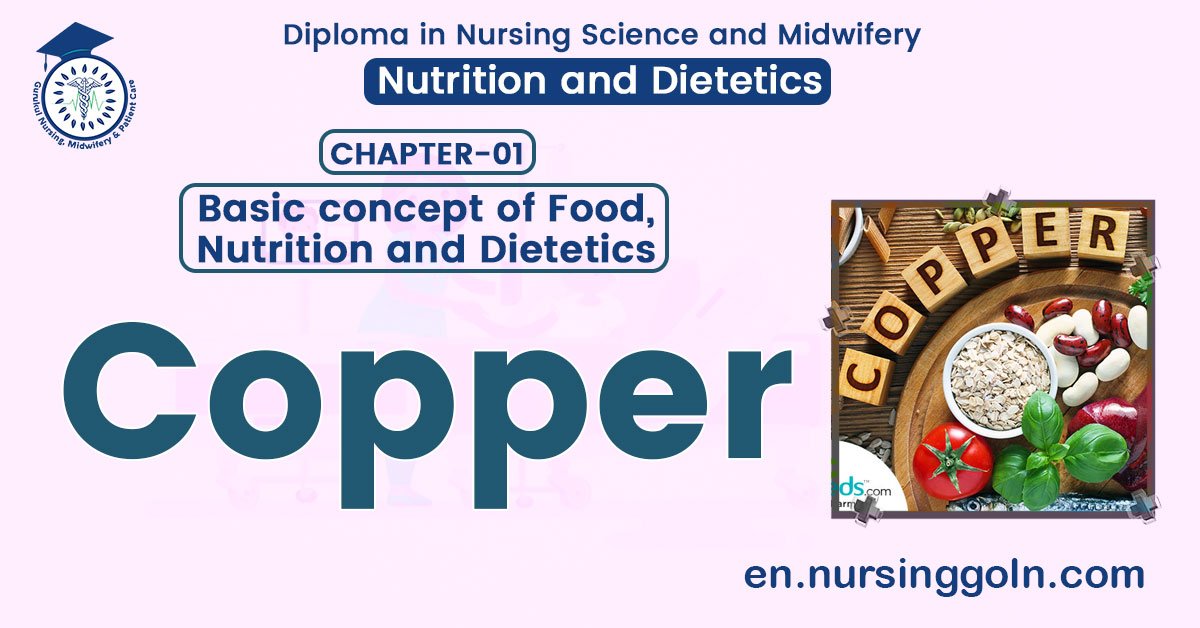Concept about Copper – This book covers the entire syllabus of “Nutrition and Dietetics” prescribed by BNMC-for all Diploma in Nursing Science and Midwifery students. We tried to accommodate latest information and topics. This book is examination friendly setup according to the teachers’ lectures and examination’s questions. At the end of the book previous university questions are given. We hope in touch with the book students’ knowledge will be upgraded and flourished. The unique way of presentation may make your reading of the book a pleasurable experience.

Concept about Copper
Copper (Cu):
Copper is a trace element essential for the human body. Copper is found in the brain, liver, heart and kidneys. Adult body contains 100 to 150 mg of copper. Blood, plasma, and RBC have highest content of copper. Deficiency or excess of copper rarely occurs. It has some role in the synthesis of haemoglobin, connective tissue formation and bone development. Normal serum level of copper is about 16 pg percent. Normal daily diet contains 2 mg copper on an average.
Sources of copper:
1. Common salt.
2. Banana.
3. Tomatoes.
4. Green leafy vegetables
5. Bajra.
6. Sorghum.
7. Maize whole wheat.
8. Pulses black gram.
9. Dried peas.
10. Cow gram.
11. Cashew nuts.
12. Ground nuts.
13. Drum sticks.
14. Beet root
(Ref: Onila Salin’s Essential nutrition/1/47-48)

Functions of copper:
- Copper facilitates the absorption of iron.
- Plays a role in the incorporation of iron in the haemoglobin molecules and cytochrome.
- It is necessary for the conversion of the amino acid tyrosine to melanin.
- Copper is required for the bone development.
- In presence of copper absorption of iron takes place.
- Copper is essential for the health of the central nervous system.
- Copper is required for melanine pigment sheath formation
- It required for maturation of collagen.
- It required for haemoglobin formation.
(Ref: Onila Salin’s Essential nutrition/1/47-48
Effects of copper deficiency:
Deficiency of copper is known as hypocupremia. It causes-
1. Osteoporosis.
2. Spontaneous fracture
3. Connective tissue dysfunction.
4. Cardiovascular disorder and
5. Massive internal bleeding.
6. Copper deficiency is associated with protein energy malnutrition.
(Ref: Onila Salin’s Essential nutrition/1/70

Daily requirement of copper:
| Age group | Requirements |
| Infants | 0.5-1 mg/day |
| Children | 3 mg/day |
| Adolescent | 3 mg/day |
| Adult | 2 mg/day |
| Pregnant & lactating mother | 3 mg/day |
Read more:
